Jefferson's Rock
Introduction
Text-to-speech Audio
Named in honor of the third President of the United States who stood here and declared it the finest view of the most beautiful section of Virginia he had ever seen, Jefferson's Rock is a highlight for those who visit what is now Harpers Ferry, West Virginia. This site is near the Appalachian Trail and is a popular destination for hikers. With the exception of the bridge a mile downstream and the steeple of St. Peter's Church, built in 1833, the view from this rock has changed little since the time of Thomas Jefferson’s visit.
Images
This scene is worth a voyage across the Atlantic." Thomas Jefferson, Notes on the State of Virginia, 1785.
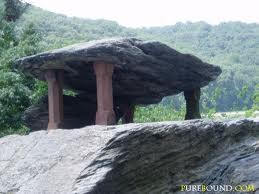
Jefferson stood here to admire the view during an expedition to this part of Virginia shortly after the Revolutionary War.
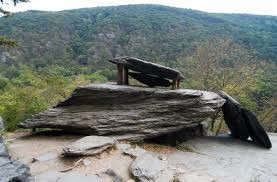
Land marker
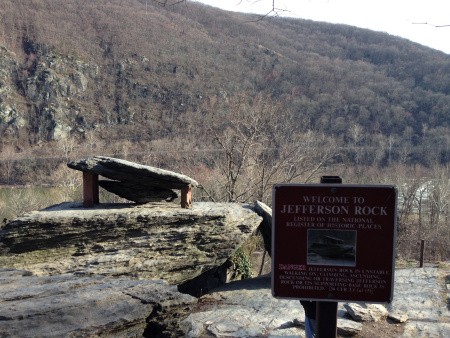
A view of the Shenandoah and Potomac Rivers from the rock.
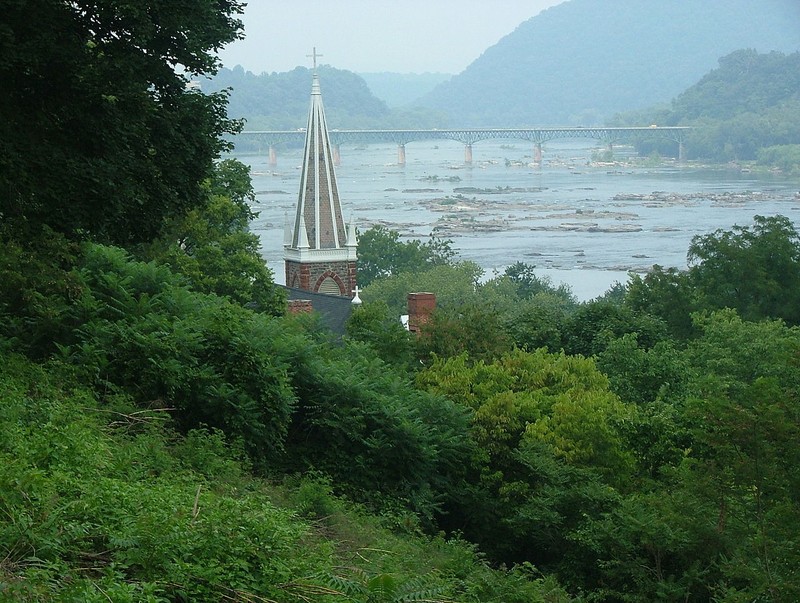
Jefferson stood here to admire the view during an expedition to this part of Virginia shortly after the Revolutionary War.
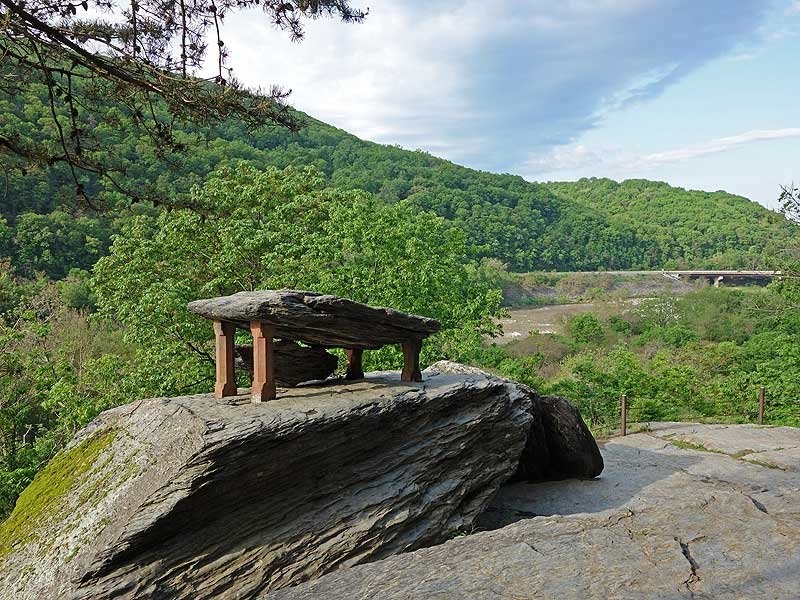
"This scene is worth a voyage across the Atlantic." Thomas Jefferson, Notes on the State of Virginia, 1785.
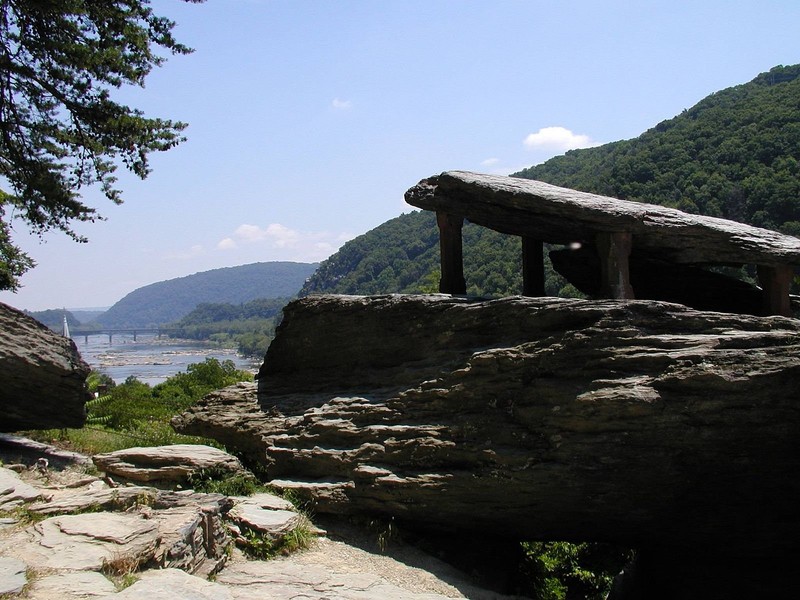
A view of the Shenandoah and Potomac Rivers from the rock. The steeple is from St. Peter's Church, built in 1833.
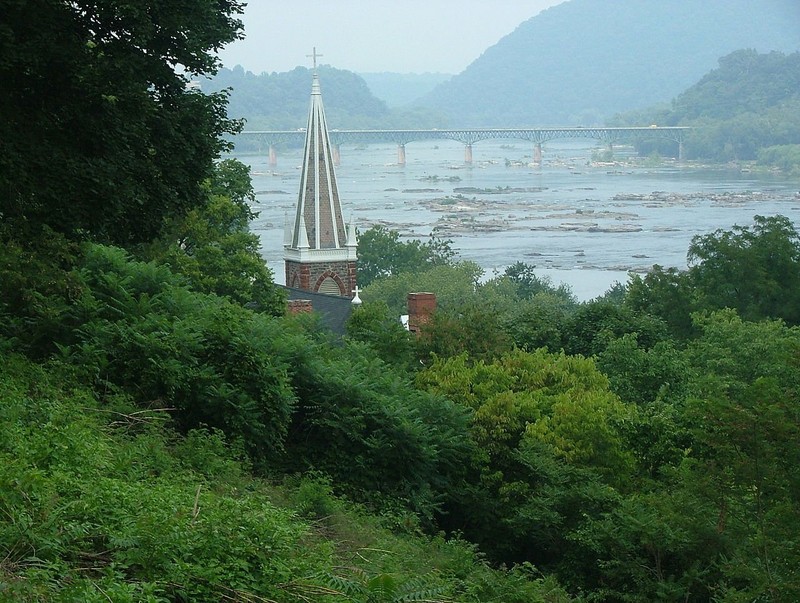
This photograph shows an 1864 view of Harpers Ferry from Jefferson Rock. A train carrying Union soldiers passes across Virginius Island. Courtesy of Crossroads of War.
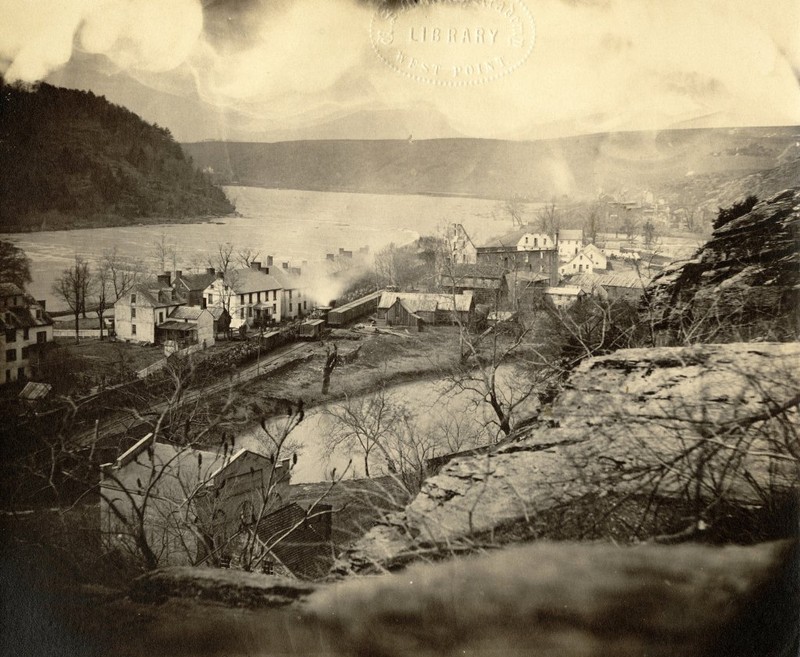
"View of Jefferson Rock (right) and the passage of the Potomac River through the Blue Ridge Mountains, from Ed Beyer’s “Album on Virginia”, 1857. Thomas Jefferson stood at this spot on October 25, 1783. (HF-249, Historic Photo Collection, Harpers Ferry NHP)"
.jpg)
"Photo of Jefferson Rock (top right) and the old Cotton Factory building adjacent to the Shenandoah River, c.1886. The Cotton Factory was converted into a flour mill in 1867, and operated until 1889. (HF-375, Historic Photo Collection, Harpers Ferry NHP)"
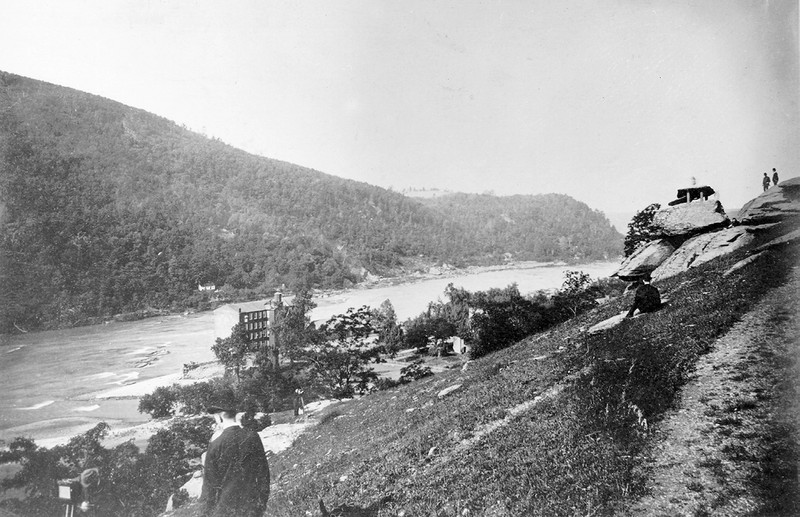
Backstory and Context
Text-to-speech Audio
Thomas Jefferson stood on the rock on October 25th, 1783, enjoying the view so much that he waxed eloquent about its beauty in his famous work, Notes on the State of Virginia. According to Jefferson, the view alone was “worth a voyage across the Atlantic."
Jefferson's Rock is a shale formation that overlooks the area where the Potomac meets the Shenandoah River. The area has changed some since 1783, as the natural foundation holding the part of the rock where Jefferson stood began to erode over time it became so unsteady that one could sway the rock back and forth with a simple push. Since the natural foundation had become unsafe, four stone pillars were placed under each corner of the top slab in sometime between 1855 and 1860.
"The passage of the Patowmac through the Blue Ridge is perhaps one of the most stupendous scenes in Nature. ...The first glance of this scene hurries our senses into the opinion that this earth has been created in time, that the mountains were formed first, that the rivers began to flow afterwards, that in this place particularly they have been so dammed up by the Blue Ridge of mountains as to have formed an ocean which filled the whole valley; that, continuing to rise, they have at last broken over at this spot and have torn the mountain down from its summit to its base. The piles of rock on each hand, but particularly on the Shenandoah, the evident marks of their disruptions and avulsions from their beds by the most powerful agents in nature, corroborate the impression. But the distant finishing which nature has given the picture is of a very different character. It is a true contrast to the former. It is as placid and delightful as that is wild and tremendous. For the mountains being cloven asunder, she presents to your eye, through the cleft, a small catch of smooth blue horizon, at an infinite distance in that plain country, inviting you, as it were, from the riot and tumult roaring around to pass through the breach and participate in the calm below. ...This scene is worth a voyage across the Atlantic." -Thomas Jefferson, Notes on the State of Virginia, 1785
Jefferson's Rock continues to captivate visitors today with its scenic views of the rivers and mountainous landscape. The steeple of St. Peter's Roman Catholic Church is visible through the trees. Nearby are ruins of St. John's Episcopal Church, used as a hospital and barracks during the Civil War, and the Harper Cemetery. Visitors also can walk part of the Appalachian Trail, which runs from Georgia to Maine.
Sources
Gilbert, David T. "Thomas Jefferson at Harpers Ferry". http://www.dgilbert53.net/?page_id=460
Stowell Jr., Walton Danforth "Jefferson Rock." e-WV: The West Virginia Encyclopedia. 02 March 2012. Web. 20 June 2016.
Jefferson Rock. National Park Service. August 25, 2016. May 23, 2019. https://www.nps.gov/hafe/learn/historyculture/jefferson-rock.htm.
Historic image:
Crossroads of War. "Harpers Ferry." Crossroads of War. Accessed September 2017. http://www.crossroadsofwar.org/galleries/harpersferry/
"View of Jefferson Rock (right) and the passage of the Potomac River through the Blue Ridge Mountains, from Ed Beyer’s “Album on Virginia”, 1857. Thomas Jefferson stood at this spot on October 25, 1783. (HF-249, Historic Photo Collection, Harpers Ferry NHP)" Thomas Jefferson at Harpers Ferry. Dave Gilbert Graphic Design. Accessed August 9, 2021. http://www.dgilbert53.net/?page_id=460.
"Photo of Jefferson Rock (top right) and the old Cotton Factory building adjacent to the Shenandoah River, c.1886. The Cotton Factory was converted into a flour mill in 1867, and operated until 1889. (HF-375, Historic Photo Collection, Harpers Ferry NHP)" Thomas Jefferson at Harpers Ferry. Dave Gilbert Graphic Design. Accessed August 9, 2021. http://www.dgilbert53.net/?page_id=460.
